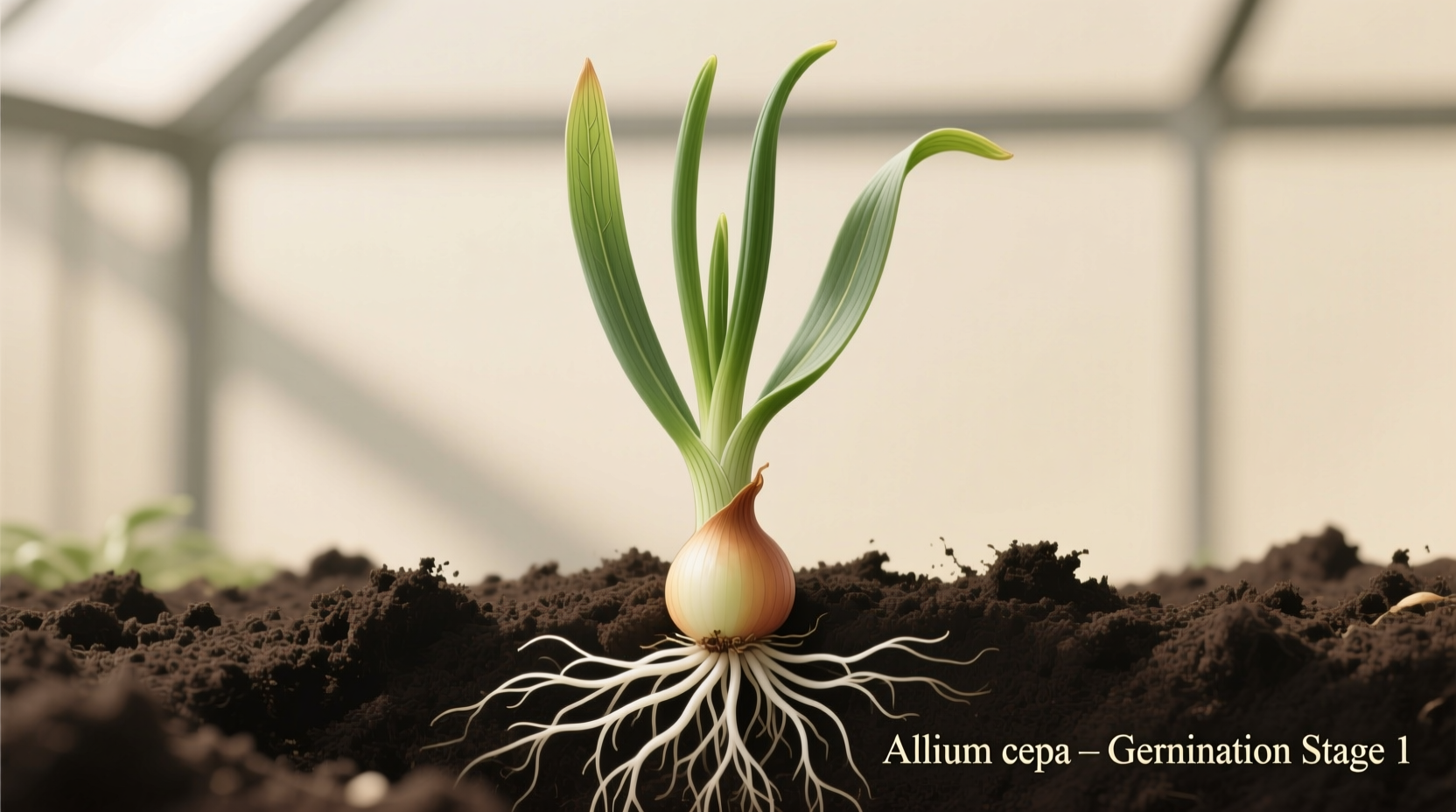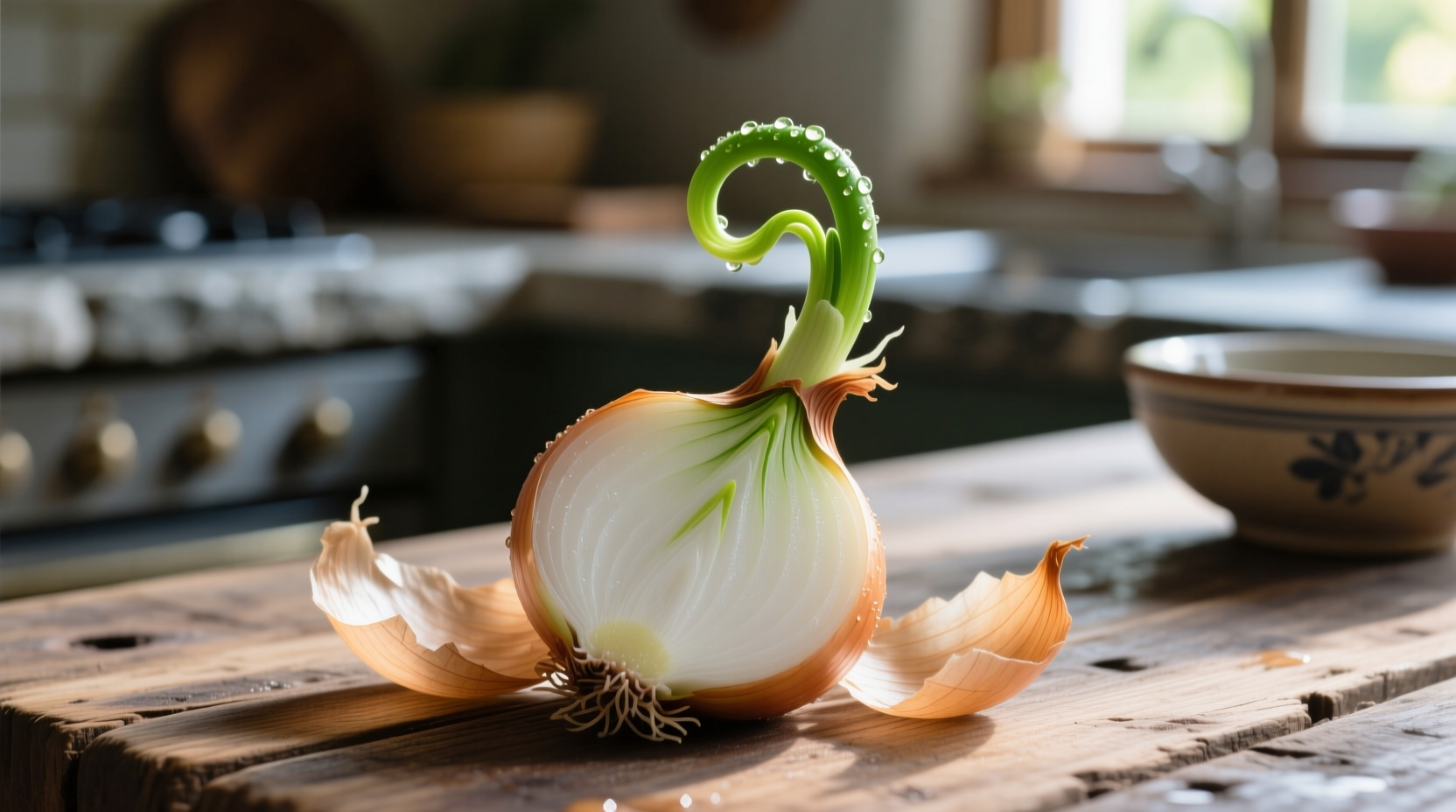That sprouting onion sitting on your kitchen counter isn't headed for the trash—it's actually your next gardening project. Thousands of home gardeners transform sprouted onions into productive plants each year, and you can too with minimal effort and common household items.
Why Sprouted Onions Make Great Starter Plants
When onions begin sprouting, they're responding to ideal growing conditions—typically warmth and humidity. This natural process means your onion is already primed for growth. According to the University of Minnesota Extension, onions enter their active growth phase when temperatures reach 50°F (10°C), which explains why your pantry-stored bulbs start sending up green shoots.
| Onion Growth Stage | Timeframe | What to Expect |
|---|---|---|
| Sprout emergence | 1-3 days after planting | Green shoots appear above soil |
| Established growth | 7-10 days | Shoots reach 4-6 inches tall |
| Harvest-ready | 14-21 days | Fully developed green onions |
Your Step-by-Step Guide to Planting Sprouted Onions
Step 1: Prepare Your Sprouted Onion
Carefully separate the sprouts from the onion bulb using clean scissors. Leave about 1 inch of white base attached to each sprout cluster. The Oregon State University Extension Service recommends this method because it encourages stronger root development than planting the entire bulb.
Step 2: Choose Your Growing Medium
- Soil method: Use well-draining potting mix in a container with drainage holes
- Water method: Place sprouts in a glass with the white base submerged in water (change water every 2 days)
Step 3: Planting Depth and Spacing
Buried too deep, your sprouts won't grow properly. Plant each sprout cluster with just the white base covered (about ½ inch deep), leaving green shoots exposed. Space plants 2-3 inches apart if using a larger container.
Step 4: Optimal Growing Conditions
Onions thrive with:
- 6-8 hours of direct sunlight daily
- Consistent moisture (but not soggy soil)
- Temperatures between 55-75°F (13-24°C)

What to Expect: Growth Timeline and Harvesting
Within 48 hours of planting, you'll notice accelerated growth as your sprouts establish roots. The Royal Horticultural Society notes that onions grown from sprouts typically reach harvestable size faster than those grown from seeds—usually within 2-3 weeks rather than the 3-4 months required for full bulb development.
Harvest your green onions when they reach 6-8 inches tall by cutting what you need with clean scissors, leaving 1-2 inches of growth above the soil. This "cut-and-come-again" method allows for multiple harvests from the same plant.
Common Mistakes to Avoid When Planting Sprouted Onions
While planting sprouted onions is straightforward, these pitfalls can reduce your success rate:
- Overwatering: Onions prefer moist but not soggy conditions—waterlogged soil causes rot
- Insufficient light: Less than 6 hours of sunlight results in weak, pale growth
- Planting too deep: Burying green shoots prevents proper photosynthesis
- Using treated bulbs: Some grocery store onions have growth inhibitors—organic varieties work best
Limitations of Grocery Store Onions for Planting
While you can successfully grow green onions from sprouted grocery store bulbs, there are important limitations to understand:
- Grocery store onions are typically varieties bred for storage, not optimal growth
- They may have been treated with sprout inhibitors (especially non-organic)
- Full bulb development is unlikely—focus on harvesting the green tops
- Success rate varies by onion type (yellow onions sprout most reliably)
For best results, the Cornell University Cooperative Extension recommends using organic onions, which haven't been treated with growth inhibitors that prevent sprouting.
Why This Sustainable Practice Matters
According to USDA data, American households waste approximately 30-40% of their food supply. By planting sprouted onions instead of discarding them, you're participating in a simple but effective food waste reduction strategy. Each successfully planted sprouted onion represents one less item heading to landfill while providing fresh, chemical-free produce for your kitchen.
Ready to Start Your Sprouted Onion Garden?
With just a sprouted onion, some soil or water, and a sunny windowsill, you can begin harvesting fresh green onions in as little as two weeks. This zero-cost gardening method requires minimal space and effort while delivering tangible results—perfect for beginners or experienced gardeners looking to reduce food waste. Your next batch of homemade guacamole or stir-fry will taste even better knowing you grew the onions yourself from what would have been kitchen waste.











 浙公网安备
33010002000092号
浙公网安备
33010002000092号 浙B2-20120091-4
浙B2-20120091-4